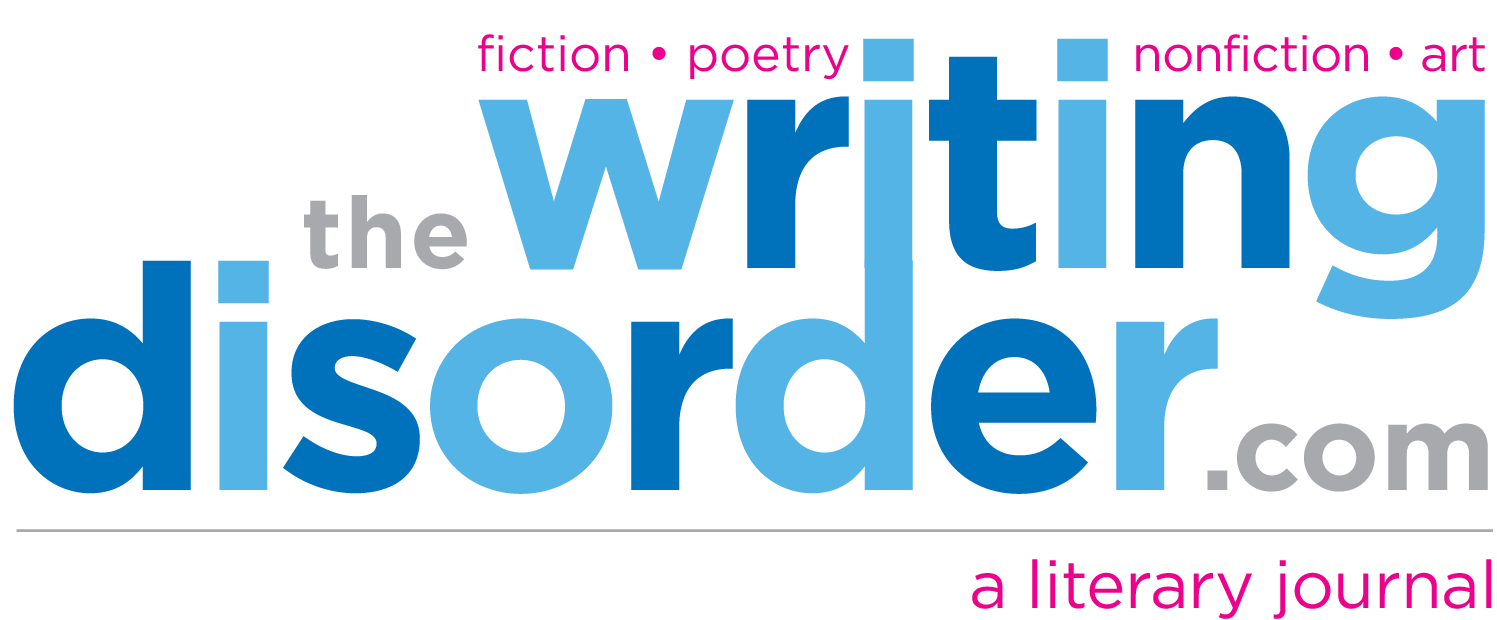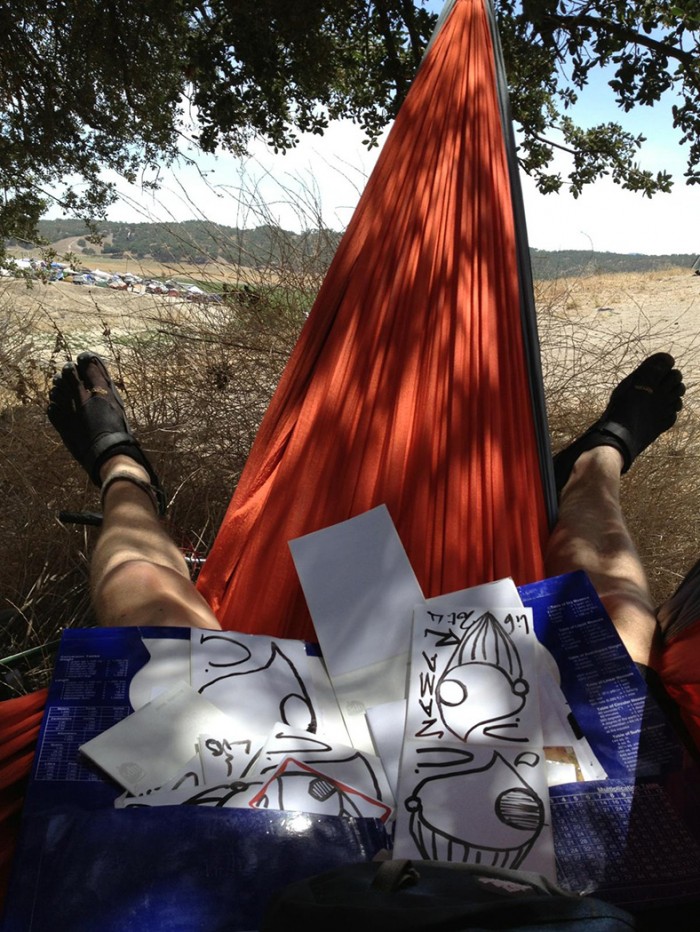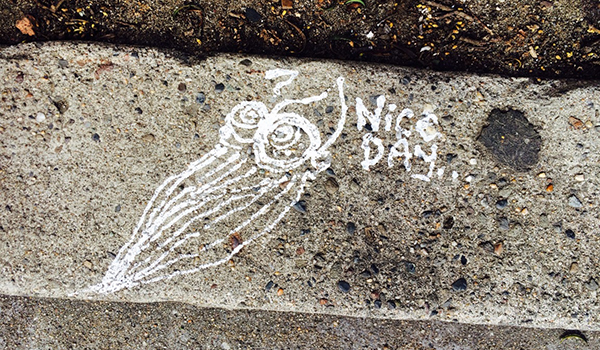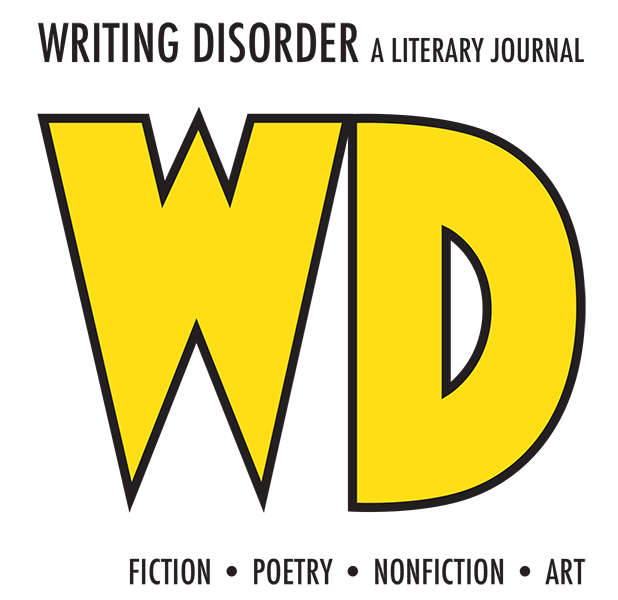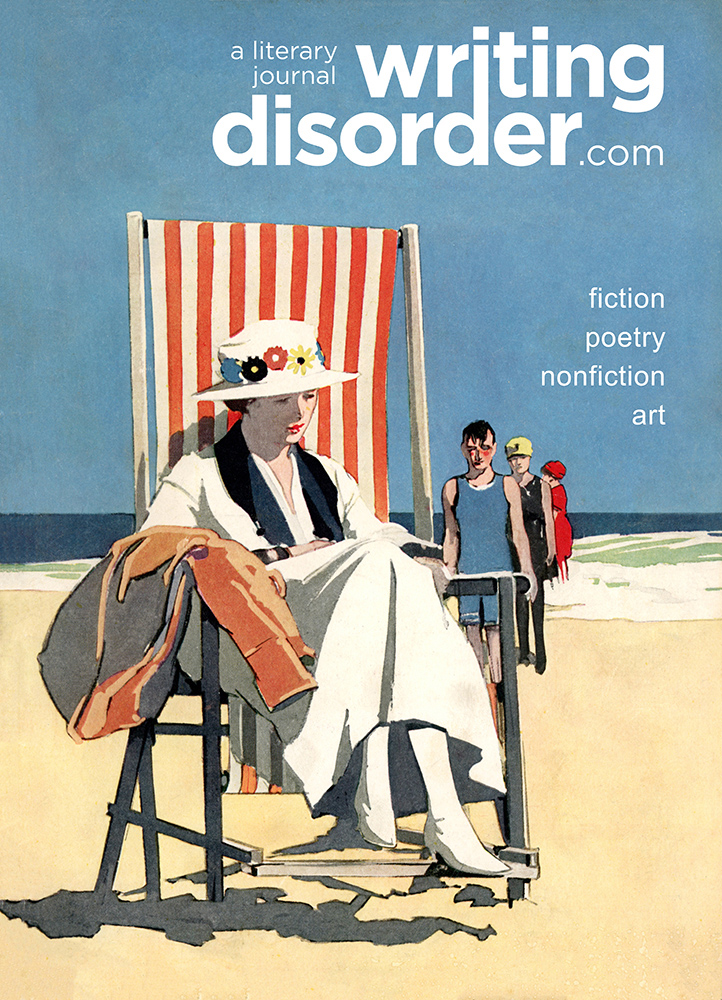An Interview with Graffiti Artist, Zamar
by Eric Vasallo
Graffiti, the Original Facebook
“Art is a demon, a demon that drags along. It’s not something you can stop, even if you should. Maybe you go insane, maybe your wife leaves you or your kid runs away. You throw yourself away to be an artist.”
—Ushio Shinohara from Cutie and the Boxer.
The cave art at El Castillo is the oldest cave art on the planet, dated to 40,000 to 100,000 years old. The paintings are made up of disks, dots and hand stencils, yet no one knows what they mean. The Ancient Egyptians were the most communicative, completely covering their walls, ceilings and sarcophagi, with brightly colored hieroglyphs as visual prayers to attain enlightenment and ensure safe passage from this world onto the next.
Flash forward to 2014; mankind still has a visceral need to mark events on walls and express emotions in an artful way. Only nowadays, it is illegal.
Forget what you know about graffiti or graffiti artists and keep reading.
Graffiti has evolved into a more sophisticated art form, gone are the days of gangs marking their territories with tags and the violence associated with it. Graffiti has turned into a pro-social art form, and a catalyst to rejuvenate blighted neighborhoods. In the words of the two female street artists and creators of the In Pursuit of Magic, project “I believe art will change the world.”
Those are ambitious goals for an unsophisticated urban art form. While the art form has evolved, sadly, the laws created to curb it are as antiquated and primitive as the cave art in El Castillo.
An article from July 2014 in the San Francisco Examiner, describes it as a 20 million dollar a year “problem.” The debate is as alive and polarized as the slow move towards decriminalizing marijuana in the United States. Each city has a different attitude, from hostile to welcoming, towards it.
A recent transplant to San Francisco, I immediately became captivated by graffiti artist, Zamar’s squid\octopus meme, which eventually became my muse and secret friend in a place where I had yet to make any. He was my first friend in the city. I would see him everywhere, on my way to the gym, on my way home from a bar, in the bathroom mirror, when I would jump out of a Lyft, I would almost step on the ever jubilant, little guy looking up at me. His googly eyes and mystical scrawled notes like “who knows?” “It could be?” “sunguishguish” were all taunting me to decipher their deeper meaning. Being a screenwriter, I became obsessed with finding out the back-story of who Zamar really was. I was convinced that there was a story, and that whoever created this character — and brought so much intrigue to so many — had to be special.
After weeks of putting up flyers, searching online for “Zamar” or “Mar” (I wasn’t sure what his real name was), digitally stalking other graffiti artists’ Instagram pages, enlisting local Zamar fans to keep their eyes peeled, I finally found the masked avenger. After more weeks of back and forth Instagram messages, he cautiously agreed to meet with me.
I wasn’t disappointed.
In a dream come true moment, I’m walking with Zamar through Oakland on a Saturday night and his face lights up whenever he shows me a tag, explaining this subculture to me. When he sees a perfect spot to leave a tag, he stops talking, crouches down and with a laser focus, tags four petite Zamar’s, each one drawn on the bend of a water pipe. His face transforms into a serious and meditatively quiet state as if he were a pregnant octopus giving birth to his larvae. My heart beat faster just to be able to witness this moment of creation.
Graffiti artists or “writers” roam wild and free in Oakland. The walls, sidewalks and empty spaces are covered in graphics like a multicolored playground for cartoon artists full of mythical characters and three dimensional letters that jump off the wall like a zany Roger Rabbit parallel universe. Here taggers are more destructive and brazen but their work is more artful. There are more crews or teams of taggers here in Oakland as well. One prominent one is “PTV” an acronym for Punks, Thugs and Vandals. There is also less enforcement here so the tags are a bit more “wild” and pervasive, covering almost every abandoned building’s walls.
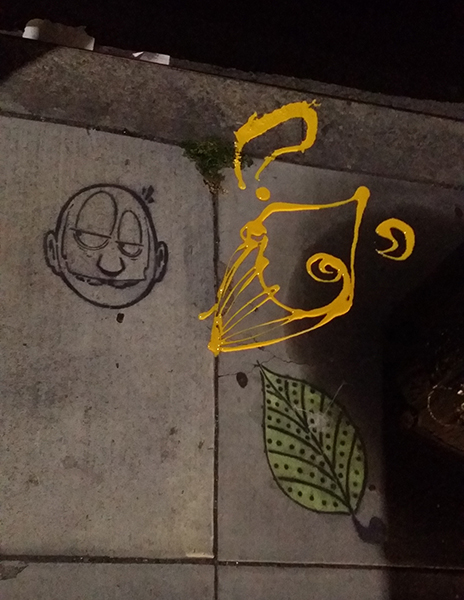
Crews are like any club; their membership pushes you to go higher with more competition in play. The “vets” mentor the “newbies.” Most taggers aim to join a crew. For some, the ultimate goal is to be a part of these dominant urban tribes with the goal of visual supremacy to each urban territory. Zamar likes to go it alone, and requires anonymity.
Zamar tells me graffiti is an art form created by youth. Zamar also started young, honing his talent by selling drawings he would make of dragons in grade school so he could buy extra chocolate milk.
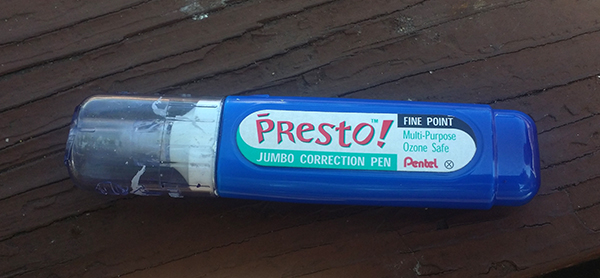
I notice his hands bear the marks of a painter, albeit a street one … his nails stained with white paint and dry from using different media to bring his character to life with whatever he can find; old cans of paint, liquid paper pens, gorilla glue and the traditional mainstay can of spray paint.
We happened upon another tagger in the midst of tagging his name “Koosk” onto a light pole and I throw a question at him, “Is what you do born out of ego or a desire to create?”
“I believe they’re a bit intertwined. I feel the need to create from the shadows. I don’t want people to know its me because it allows them to create a mystery and a story in their head of who made them and what the strange characters represent.”
Zamar tells me these street writers created the original Facebook, networking via real walls not virtual ones. They would know what each other was up to by noticing updates on the “wall” and literally reading the writing on the walls that they would “tag.” You could know which crew they were a part of or not and what their territory or main area was and what they represented.
Today, Instagram has become the new social media of choice for grafers or writers. It’s a temporal platform and there isn’t much chatting, so it maintains anonymity which taggers require for obvious reasons in their constant game of hide and seek with local authorities. There is also an online community of graffiti artists at where you can view profiles and samples of their work, with an option to upload photos to the site of work you happen to appreciate.
Writing can become a huge business for a choice and select few like Shepard Fairey of the Obama campaign, “Hope” image fame, who has his own clothing line where legions of hipsters sport his “Obey” hats and clothing *available now at Urban Outfitters. Then there’s the anonymous guerilla artist like Banksy, who is known as a sort of masked Zorro and so desired that a local graffiti writer stole a Banksy on Mission, carving the concrete right from the wall. The intrepid street art entrepreneur makes a living going all over the globe, stealing and selling other artist’s work and making good “bank”.
But even those high profile artists aren’t immune to law enforcement. The New York Post recently published they were hunting for Banksy after several of his installations popped up all over the city. Mayor Bloomberg was quoted saying graffiti is a “sign of decay and loss of control.”
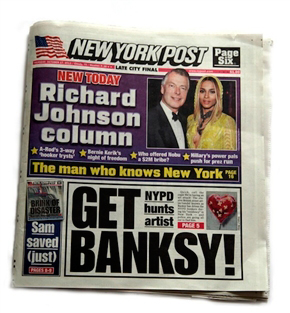
List of Graf Terms:
One liners — a tag made with one continuous line, a form of graffiti that’s hard to do without dripping paint or mistakes.
Slaps — slappers draw or print their tags on blank stickers, FedEx or USPS stickers and slap them all over the city. They are easier to apply and usually easier to remove.
Scribing — taggers use a pen with a special tip that engraves on random hard surfaces like granite columns, stainless steel elevators, wood paneling, mirrors, etc.
Ground work — line work at street or eye level.
Writing to heaven — more established artists write closer to the sky, not to be closer to god but because it’s the most visible and dramatic artistic statement and ensures their legacy will remain longer since it’s very difficult for a city worker to scale the walls like the writers do in order to buff or grind it out.
Wheat pastes — pre-painted or printed images on wheat paste panels easily applied to surfaces with glue. These are easier to apply and decrease chances of getting caught in the act.
Hand styles — transcend national boundaries. For example: San Francisco hand styles can be found in Paris.
ZAMAR INTERVIEW
E.A. Vasallo: How did you come up with your animated squid\octopus creature that has haunted and noticed by so many across our city?
Zamar: I grew up in Baltimore moored on a Crystal Channel Cutter sailboat with my parents and I was home schooled until about 5th grade. We would travel south to Key West in the winter so I fell in love with the nature and beauty of the Florida Keys. When we’d take our dinghy boat to get supplies, I’d sit and wait for them and look up at the sky. I wanted to represent that peace in my tags. That feeling that all was right with the world while on the ocean. I also consider the octopus as one of the smartest and craftiest creatures of the ocean realm that I’d often fantasize about. Zamar came through that connection with the sea I had as a child.
Zamar is a compound name joining the letter Z, which I love for its aesthetics combined with the Spanish word “mar” which translates to “ocean”. I looked it up to see if the word existed and coincidentally the word means Hebrew for “praise God.” I believe something happens when you write for so long, it becomes kind of like a mantra that you repeat over and over again, each time you tag your chosen name. I can’t really explain scientifically what happens but there is a sort of transcendence that happens. Which seems to explain why some artists do it until they die. They sort of become possessed.
E.A. Vasallo: What is your motivation for creating Zamar? Does he have a mission?
Zamar: I sat at the park at Patricia’s Green in Hayes Valley about a year ago and realized how everyone was on their smart phones and no one was looking at each other at all. Everyone was disconnected. I wanted to create something that would help people connect and feel connected with something. I thought that the ground was the best place for Zamar, below eye level. It’s a natural line of sight for people always looking down at their phones. I try to do things for the public. I am very aware of Zamar’s impact. That’s why I like to tag him near anything that water flows through, like drains, pipes, and sewers.
For some writers, graffiti is like a void you throw so much time and energy into it and it goes nowhere. But for me, I’d like to make a name for myself eventually. Some writers have built a reputation over the years building interest and buzz slowly.
My mom was a teacher for the public school system; where she would often try to help kids out from troubled homes. I was in the United Nations club in high school and the Aquarium as a guide for school children. She instilled the ability to look beyond myself and to help others. That’s what is most exciting for me to be in San Francisco because it seems to be a city that cares for it’s own more than any other city in the U.S. It seems like so many people are planting seeds here. Zamar is my seed.
E.A. Vasallo: Are you afraid of getting arrested for doing your art or graffiti?
Zamar: There’s nothing that will stop me. The day that Zamar stops, is that day I stop. There’s a tagger that has a phrase he uses in his tags, “Can’t stop, don’t wanna stop.” A local writer got “wrapped” which means he got caught, got two nights in jail for a tag in the Tenderloin. I talked to him when he got out and he said he’d keep going because that’s what the true writers do. I feel that way too. It’s a whole world within another world, another dimension and I’m totally stuck in it. As far as going to jail, I feel it’s like when a soldier dies in combat. It’s his ultimate experience. If you really want to take it to the next level you have let stop being afraid and the rules and all the structures that confine you.
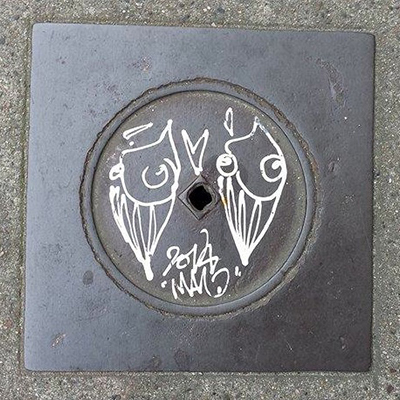
E.A. Vasallo: Obviously, not all street artists are as benign as you or altruistic in what they are doing but how do you feel about being called a criminal or a vandal and see your little guy on the cover of the San Francisco Examiner?
Zamar: It’s amusing how institutions use words to easily demonize those that aren’t in line with what they want. We are not all criminals, or vandals. We are aware and informed citizens. Not all are like that, there are darker ends of the spectrum and some play the line, taunting police.
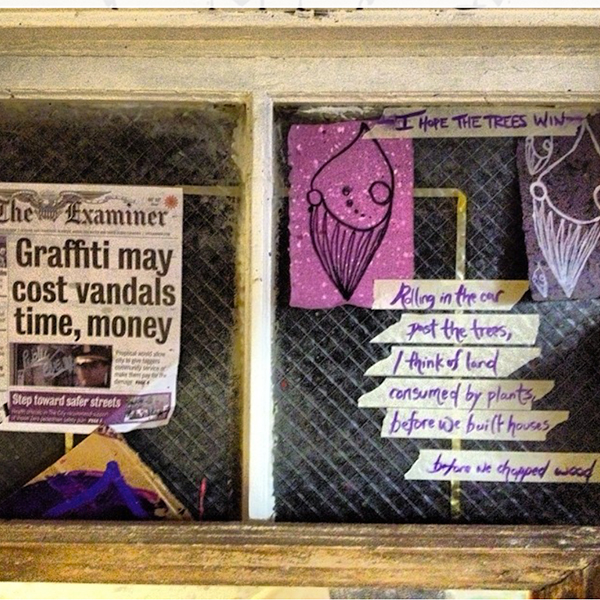
I do have a tiff with the institutions that I’m angry at and this is my way to stick my thumb at it all and it doesn’t require all the bureaucracy to protest it. A lot of writers also use the medium to protest things they don’t like about the community. For example, there’s a writer named “Khy” who’s from the Mission and it means, “keep hoods yours” which is a protest to all the evictions going on these days. A lot of these guys have grown up in the Mission and they are upset about how they are being forced to live elsewhere because of skyrocketing property values. That’s why you see tags all over walls when a new store is being built, they will tag the hell out of it in protest because that store pushed out a mom and pop store just so the landlord could get higher rent. Art and vandalism do intersect. Some artists are focused on being a vandal. I am on the other side of the spectrum.
Some artists are on the side of destructive art and some choose walls that are abandoned or blighted and they put up a large piece, which in their eyes will beautify the public space.
It sucks that some people have a notion that it’s bad. I think we forget what public space is. We forget what sharing a space is because it gets painted every day. We forget how to really interact with each other. So when you see graffiti, it comes off as shocking because it’s a ripple in the system -a glitch in the matrix of sorts. It’s there and it’s not supposed to be. It causes panic and feeling of loss of control.
The penalties don’t seem to be effective at stopping it and I don’t believe it’s justified that someone should go to jail for this. There has to be a better way to deal with it. Some writers can get up to 3 years jail time and a $50,000 fine. If they are caught with another person it can be considered a gang and those charges are a felony with an increased sentence. Recently, the city has tried to pass a new law to charge artists or as they like to call “vandals” the cost of clean up. The problem with that is these kids usually don’t have any money.
E.A. Vasallo: Are there rivalries or violence amongst writers?
Zamar: In the past, graffiti used to be more gang related. It was kind of incubated there because it was used to mark territories. That’s where most of the stigma for the art form was created. Today it’s not like this. The taggers are a little bit thuggish but it’s mostly a look worn by young kids that don’t have anything to do and are artistically inclined. They don’t really hurt each other. Lots of them work at coffee shops or local markets. It’s not like Al Capone tagging “Al Capone” and killing people. Taggers have gotten killed in the past but its rare and usually just people at the wrong place at the wrong time like any other murder. There is an unwritten rule that you should never tag or post a slap over anyone else’s tag space. No other tagger or writer has come after me but shop owners have. I had a woman throw a trash can on my head while I was finishing up a tag on wet concrete and an Asian shopkeeper chase my down the mission with what seemed to be a samurai sword yelling “f**king bin rat” at me. That was my all time, harshest diss but I got away both times and finished my tags. In honor of that man, I occasionally tag “bin rat” on recycle bins. One guy named Jade, that did a lot for graffiti died about a year ago. Every now and then taggers will tag his name in honor of him, so there is definitely camaraderie.
E.A. Vasallo: What is the ethnicity or age group of most taggers in the city?
Zamar: Most are white guys, mostly young, under 30. One up and coming kid is “Staner” he’s about 14 and really into graf or writing. Back in the day, Asian writers ran San Francisco and they were excellent at what they did. The most prominent Asian tagger was “Tie” and his real name was Jonathan Lind who started writing around 13 and stopped around 18. He ended up being shot and killed in the 90’s while climbing down someone’s fire escape after finishing a tag. The landowner used a justification similar to the Trayvon Martin case and got off scot-free. Tie would tag with another white guy named “MQ” started really pushing graffiti here in the city and they really made “bombing” or “throwies” popular here. It was based on NYC wild style where the letters are slanted or leaning and filled in with a different color.
E.A. Vasallo: How long have you been tagging in San Francisco?
Zamar: For about 4 years now. It started with a little urge and now it’s become a fire that I can’t put out.
* * *
Altruism and artistic pursuits aside, the local government lumps all this graffiti into one category—vandalism. For city officials, it is a major nuisance that costs taxpayers and property owners that are fined to clean up what is for the vandal, an irresistible and natural form of expression. It’s a never-ending battle equivalent to Sisyphus trying to push that darn rock up that steep San Francisco hill. Sure, there are education programs for youth and advisory boards and mural programs but the graffiti clean up still sucks up a huge chunk of the city’s yearly budget that can be better spent elsewhere.
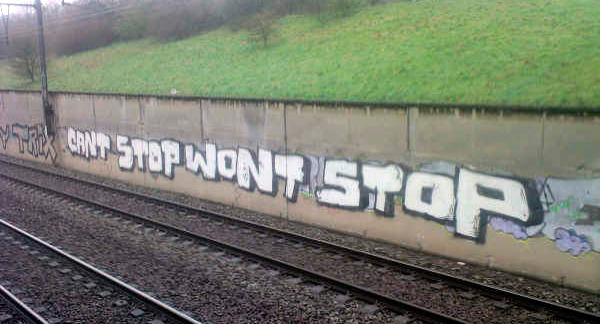
The challenge is how do we address it so it’s copasetic, where both parties get what they want? Bearing in mind that you can never stop people from having the desire to “write” or “tag.” How can you get them to not only express themselves but to nurture that talent to higher art forms that benefits the city?
Many citizens view the whole graffiti subject as a healthy and normal subculture that’s been around as long as humans could paint hunting scenes and shamanistic visions on cave walls and will probably be with us for as long as we are around on the planet. The goal of a city should be how do we get these creative individuals to move up from the destructive street art level to the productive artist or muralist category that will enhance the city instead of leave unsightly blemishes.
Progressive communities have gotten creative with the problem and the initiative has helped to improve blighted neighborhoods as well as help bring the artists some positive press and notoriety. StreetSmARTS and SF Beautiful programs try to do this by commissioning half of the cost of murals created by their roster of approved local artists. The image design goes through multiple hoops to get final approval, involving city officials, property owners and the artists. Property owners get their walls beautified and mostly graffiti proof as well as save money on fines and repainting costs. The city spends less money on clean up and enforcement. It’s a win-win situation. However, many proposals fail because property owners don’t want to pony up there half of the cost, which is at least $2,000 per mural.
Hayes Valley Art Coalition is on the same mission but with fewer hurdles to jump over. They recently commissioned a mural by Zio Ziegler on Linden alley across from Blue Bottle Coffee. The coalition plans on installing many more murals as they work to gain permission from owners in Hayes Valley.
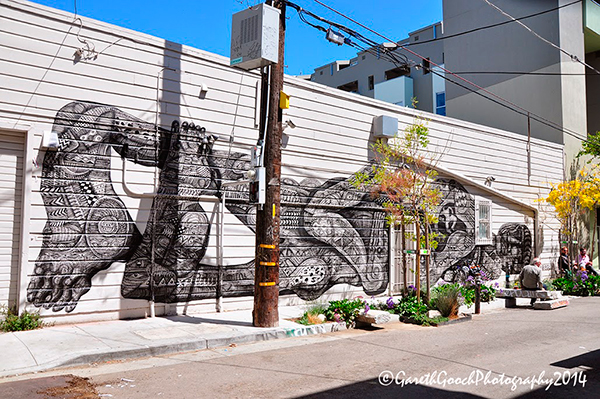
Cities like Miami, Philadelphia and even Bogota, Colombia are also commissioning their local street artists and artists abroad to rejuvenate their blighted neighborhoods or up their coolness quotient. Montreal has upped the ante by hosting and commissioning the most celebrated muralists from around the world through a mix of private and public funding for its yearly city-wide mural fest, now in it’s second year which has attracted thousands of people to visit during the festival and millions of dollars in tourism income.
One suggestion could be accepting this art form as a human condition that like pot smoking or skateboarding, won’t ever go away. Give them a way to legally do it, in an acceptable and regulated form. The millions saved in clean up costs can help fund local graffiti parks. If they want to paint on walls, give them walls to paint on. The city’s StreetSmARTS program has tried this with one sanctioned wall but the taggers’ graffiti inevitably spilled over to private property near the allocated walls. Possibly a more extensive and permanent graffiti park would do the trick? Part of the cost could be covered by companies to help foot the bill in exchange for free advertising on public spaces? Primary Flight in Miami has accomplished this with companies like Levi’s and Sharpie.
The Precita Eyes Muralists Association in the Mission District is one of only three community mural centers in the United States. The organization sponsors and implements ongoing mural projects throughout the Bay Area. It also offers a once a year mural contest and four weekly art classes for children and youth (18 months through 19 years) and other classes for adults.
As we have already witnessed in the move towards marijuana legalization, once cities find a way for street art to generate revenue for the city coffers and boost tourism, what was once a foe can quickly turn into a friend.
The main gripe city officials have with graffiti is if you want to make murals, it is welcome by the city of San Francisco, however get permission to do it in the appropriate manner and through the various programs set up for that expression. It is vandalism when you don’t have permission to tag or paint a mural on someone else’s property. Period. Property owners will get fined if they don’t pay to clean up the graffiti, so it is an unfair burden for a tagger to put on them.
Are these just lawless hoodlums refusing to obey laws or is our definition of public and private property warped? American Indians believed our land was shared and incredulously look on as the white man began selling land that was considered for all, since time immemorial.
“My reason teaches me that land cannot be sold. The Great Spirit gave it to his children to live upon. So long as they occupy and cultivate it, they have a right to the soil. Nothing can be sold but such things as can be carried away” —Black Hawk
The original Americans lost that war so now we are stuck with a new set of laws. However, as time goes by and societal norms shift, laws are inevitably revised. Is it time for us to revise the laws created to curb the enforcement of this age-old problem?
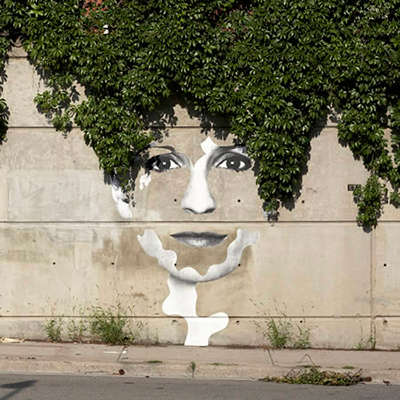
When you get right down to the nuts and bolts of it and define why these vandals and/or artists do what they do, its option D- all of the above. It is primal, guttural, childish, altruistic, unifying, uplifting yet offensive to an eye that demands order and everything to be in its place.
However, what would our cities look like without any graffiti? We would have blank-page cities with blank walls; all perfectly clean with no trash or homeless problem or anything that isn’t aesthetically pleasing. We would have the opposite of natural, a fake obstruction of nature’s flow that these lone madmen can’t resist the urge but to let it flow out of them, through their fingers and onto a wall. That disobedience inspires us be conscious of our human condition and for a moment look away from our smart phones to a three dimensional reality.
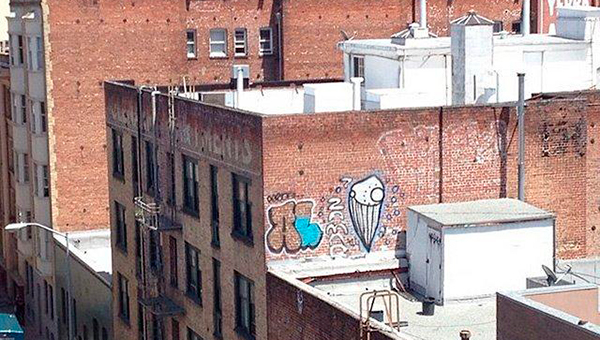
While the rest of the good people of San Francisco scuttle about their normal, ambitious lives, those that dare can veer off onto a dark side street and perhaps be lucky enough to spy a graf writer lurking in the shadows, looking for a place to leave his temporary legacy, to mark his life for us to discover like a modern archaeological treasure buried just underneath our busy feet.
What were the ancient cave painters trying to tell us? What are the modern day ones trying to tell us? What aren’t we “getting”?
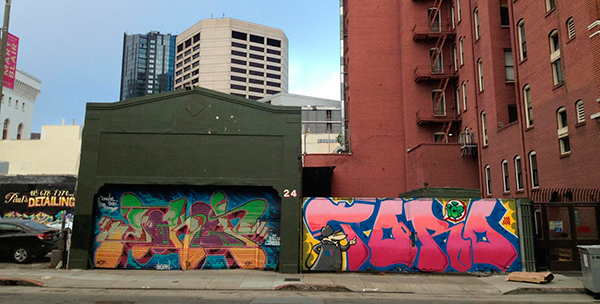
You’d be lucky to find a clever, colorful tag, you’d be even more lucky as I have been to get to know one of these artists, that are just good people but with an uncontrollable hunger for expression, and a knack for being wily as roadrunners. They prefer to avoid the limelight or sell themselves; there is no fee to see their work. Their only desire is for you to see the crumbs they want you to see, taunting you to discover their real treasure, which is their talent and ability to manipulate lines on concrete walls, challenging our concept of what a city should look like.
Some call it a crime, others call it vandalism, you can call it what you want … I call it magic.
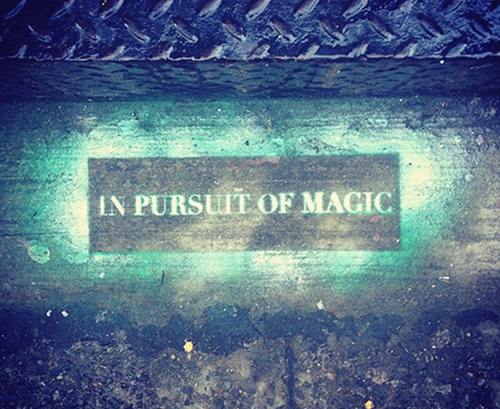
NOTES
The San Francisco Department of Public Works helps manage the city’s Graffiti Advisory Board, which advises the Mayor and Board of Supervisors on graffiti enforcement, cleanup and prevention strategies. Anyone wishing to offer new suggestions or solutions to the enforcement of graffiti can attend their open meetings held once a month.
A local fan, James Hargis, was inspired to create a video compilation of Zamar tags, called Tentacle Shift -over a year in the making.
Wrinkles of the City- an innovative, mural Project in major cities around the globe.
Piece By Piece: San Francisco Graffiti Documentary.
BIO
 E.A. Vasallo – Archaeologist, young adult fiction writer, screenwriter and blogger. Awarded best screenplay 2014 – New Media Film Festival Los Angeles, California. Currently seeking publisher for novel. Bachelors of Screenwriting for Motion Pictures and Archaeology, UM. Resides in San Francisco.
E.A. Vasallo – Archaeologist, young adult fiction writer, screenwriter and blogger. Awarded best screenplay 2014 – New Media Film Festival Los Angeles, California. Currently seeking publisher for novel. Bachelors of Screenwriting for Motion Pictures and Archaeology, UM. Resides in San Francisco.
